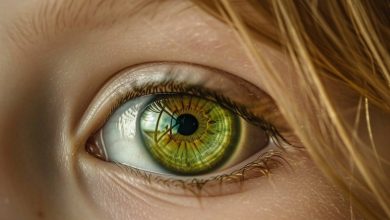How to get relief from back pain related to scoliosis

I later learned that I was one of the 2 to 3 percent of people with scoliosis, according to the National Scoliosis Foundation. About 3 million cases of scoliosis are diagnosed each year in the United States, usually in children ages 10 to 12, according to Johns Hopkins Medicine. Girls and women are more likely than boys and men to have scoliosis. We do not know why.
While some of us have had a curved spine since childhood, adults can develop scoliosis that gets progressively worse over time due to wear and tear on the spine. “As we have more and more people aging and becoming elderly, degenerative scoliosis in adults will certainly be more common,” said Akhil Chhatre, director of spine rehabilitation at Johns Hopkins Medicine in Baltimore. .
X-rays like the one I had when I was a teenager show the shape of the spine and the asymmetries that form around it. Doctors diagnose scoliosis when a curvature of the spine “measures 10 degrees or more on an X-ray,” according to Johns Hopkins Medicine. Scoliosis curves are typically characterized by “S” or “C” shapes, but each person’s spine is unique, as is how their body compensates.
Doctors may identify a problem during routine exams. According to the Cleveland Clinic, scoliosis is often accompanied by clues such as irregularity in the shoulders, waist or leg length.
Physical trauma such as a fracture or arthritis of the spine can lead to scoliosis in adulthood, Chhatre said.
But the Mayo Clinic and other experts say the cause of childhood scoliosis is often unknown, although it can be hereditary.
Teenagers with scoliosis are often more concerned about how it affects their appearance, said Sanja Schreiber, director of a scoliosis physiotherapy clinic called Curvy Spine Inc. in Edmonton, Alberta. That’s certainly what I was thinking about.
Many teenagers don’t feel pain from their scoliosis, Schreiber said, although I remember feeling pain while sitting in classroom chairs.
In adulthood, especially in older adults, scoliosis can cause pain, arthritis, pinched nerves and even difficulty walking or breathing, Chhatre said.
In severe cases, the spine can twist into one of the lungs, squeezing it “like a towel with water,” said Santhosh Thomas, a doctor at the Cleveland Clinic’s Center for Spine Health. This can lead to a limited ability to do strenuous exercise or stand for long periods of time, and such severe cases may require surgery.
With milder curves, there is sometimes no pain, but even minimal curvature “can manifest with symptoms such as soreness, discomfort or soreness,” Chhatre said.
I know very well that years of sitting at a computer all day with less than ideal posture has an effect on the muscles surrounding my spine. Stiffness and pain, especially in my neck and around the top of my curve, sets in periodically, reminding me to stretch and stand up or take a walk.
How is scoliosis treated?
When the spinal curvature angle is less than 20 degrees, scoliosis is often considered mild enough to go untreated.
Children and adults with curvatures greater than 40 to 50 degrees are candidates for surgery, which often involves straightening the spine using steel rods and carries risks including blood loss, inflammation and nerve damage. In recent years, less invasive surgical techniques have been developed, involving smaller incisions and faster recovery.
A patient’s age, health and expectations all play a role in deciding whether to proceed with surgery, Thomas said. “If a patient can function without much pain, then there is no reason to operate or correct the deformity,” he said. It’s difficult to put a number on the percentage of patients who will need surgery, he said, but some 38,000 people undergo spinal fusion surgery each year, according to the American Association of Neurological Surgeons.
For children who fall into the “moderate” curve category, like me, doctors often recommend wearing a back brace until they stop growing to prevent the curve from getting worse and possibly improve it slightly. . But at 13, I was stubborn and didn’t want to wear a corset.
My resistance did not surprise Thomas. “It’s very difficult to tell young adults to get braces because it’s a cosmetic challenge,” he said.
Physiotherapists can develop a series of exercises targeting body symmetry, balance and posture.
For example, a specialized therapy for scoliosis called the Schroth Method uses personalized programs targeting breathing, strength training, and posture awareness. Schreiber, trained in the treatment, works with patients to develop daily routines that work against the progression of the curve.
One note: I learned the hard way that insurance doesn’t always cover Schroth therapy.
But in general, scoliosis patients should find a specialist trained in managing this complex condition, Schreiber said.
Since being diagnosed with scoliosis as a child in the 1990s, my patient journey has been anything but simple. Throughout my adult life, I have seen specialists in many flavors.
But yoga was a game changer for me after I found an instructor who understood how to modify poses for scoliosis. At the height of the pandemic, her online courses helped me deal with the discomfort of sitting endlessly while working from home.
I also incorporate some Schroth therapy routines at home, but I don’t currently go to physical therapy, in part due to out-of-pocket expenses and conflicting advice I’ve received from different practitioners. Online resources about scoliosis-safe exercises and stretches also contradict each other.
Even while interviewing experts for this article, I found differences in their general advice. For example, while Schreiber cautions against stretches and exercises that put stress on the spine, such as prolonged twisting and bending, Thomas typically tells his scoliosis patients to do whatever activity they choose, provided it does not cause them pain.
All experts agreed, however, that people with scoliosis should work on good posture, take sitting breaks, exercise moderately, and stay fit to improve muscle tone and core strength. Also essential: bone health, to avoid worsening spinal curvature.
My spine still curves like it did on my childhood X-ray, but I’m taking the opportunity to improve my posture and work my back with more consistent stretching routines, exercises, and yoga. “Yoga will not cure scoliosis but will likely contribute to better posture, strengthening, and perhaps some pain control,” Thomas told me.
Schreiber says his adult patients also don’t expect to have a straighter spine, but rather desire to improve their symptoms.
“You don’t think of yourself as an X-ray,” Schreiber said. “So it’s really about what really matters to you.”
News Source : www.washingtonpost.com
Gn Health




